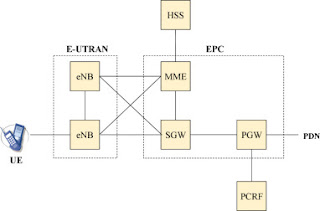The Evolved Packet Core (EPC) of Long-Term Evolution (LTE) networks is a sophisticated architecture designed to provide seamless, high-speed mobile connectivity. Two critical components within this architecture are the Serving Gateway (SGW) and the Packet Data Network Gateway (PGW). While both play pivotal roles in managing and routing data traffic, their functions and responsibilities differ significantly. This blog explores the key differences between SGW and PGW in the LTE core network.
Understanding the SGW and PGW
What Is the SGW?
The Serving Gateway (SGW) is a central component in the LTE core network that manages user data traffic within the network. It acts as a bridge between the eNodeB (base station) and the core network, facilitating the transfer of data packets for active users.
What Is the PGW?
The Packet Data Network Gateway (PGW) serves as the interface between the LTE network and external packet data networks (PDNs), such as the internet or private enterprise networks. It handles the data flow to and from these external networks, ensuring proper routing and policy enforcement.
Key Differences Between SGW and PGW
| Aspect | Serving Gateway (SGW) | Packet Data Network Gateway (PGW) |
|---|---|---|
| Primary Function | Routes and forwards data within the LTE network. | Manages connectivity between the LTE network and external PDNs. |
| Data Traffic Scope | Handles user data traffic within the core network. | Routes data traffic to and from external networks. |
| Policy Enforcement | Does not enforce policies directly. | Enforces QoS, bandwidth, and charging policies defined by the PCRF. |
| IP Address Management | Does not assign IP addresses. | Assigns IP addresses to user devices. |
| Network Role | Operates as an intermediary between eNodeB and PGW. | Serves as the gateway to external networks. |
| Security Features | Limited security functionalities. | Performs NAT, firewalls, and other security functions. |
| Roaming Support | Handles user data during roaming within the LTE network. | Ensures continuity of data sessions across roaming scenarios. |
| Interaction | Interfaces primarily with eNodeBs and the PGW. | Interfaces with external PDNs and SGWs. |
Functional Responsibilities
SGW Responsibilities:
Data Packet Forwarding: The SGW routes user data packets between the eNodeB and the PGW.
Mobility Management: It supports seamless handovers between eNodeBs, ensuring uninterrupted service as users move.
Local Data Traffic Handling: For local breakout scenarios, the SGW manages the data traffic locally without routing it to the PGW.
PGW Responsibilities:
External Connectivity: The PGW connects the LTE network to external PDNs, such as the internet or private networks.
Policy and Charging Enforcement: It implements policies and charging rules defined by the PCRF.
IP Address Allocation: The PGW assigns IP addresses to user devices, enabling communication with external networks.
Traffic Management: The PGW performs advanced traffic management functions, such as QoS enforcement and traffic prioritization.
Security Functions: It ensures secure data transmission through NAT, firewalls, and other mechanisms.
How SGW and PGW Work Together
The SGW and PGW collaborate closely to deliver a seamless user experience. Here’s how they interact:
Data Flow: The SGW receives data from the eNodeB and forwards it to the PGW. The PGW then routes this data to the internet or other PDNs.
Mobility Support: During handovers, the SGW ensures continuous data flow, while the PGW maintains external connectivity.
Policy Enforcement: The SGW facilitates data transfer, while the PGW enforces policies and manages IP addresses.
Use Cases Highlighting the Differences
Case 1: Local Data Breakout
In local data breakout scenarios, the SGW can route data directly to local networks without involving the PGW. This reduces latency and improves performance for local applications.
Case 2: Global Roaming
During international roaming, the PGW ensures data session continuity and applies appropriate policies, while the SGW handles mobility management within the visited network.
Conclusion
The Serving Gateway and Packet Data Network Gateway are indispensable components of the LTE core network, each with distinct roles. The SGW focuses on managing user data within the network, while the PGW handles connectivity to external networks and enforces policies. Together, they form the backbone of the EPC, ensuring reliable and efficient mobile broadband services. Understanding their differences is essential for anyone involved in designing, managing, or optimizing LTE networks.












 It doesn't matter that you want to become strong! There's no need to compare yourself to them! The others are themselves and you are yourself! The answer to your life are all within you!!
It doesn't matter that you want to become strong! There's no need to compare yourself to them! The others are themselves and you are yourself! The answer to your life are all within you!!
No comments
Post a Comment